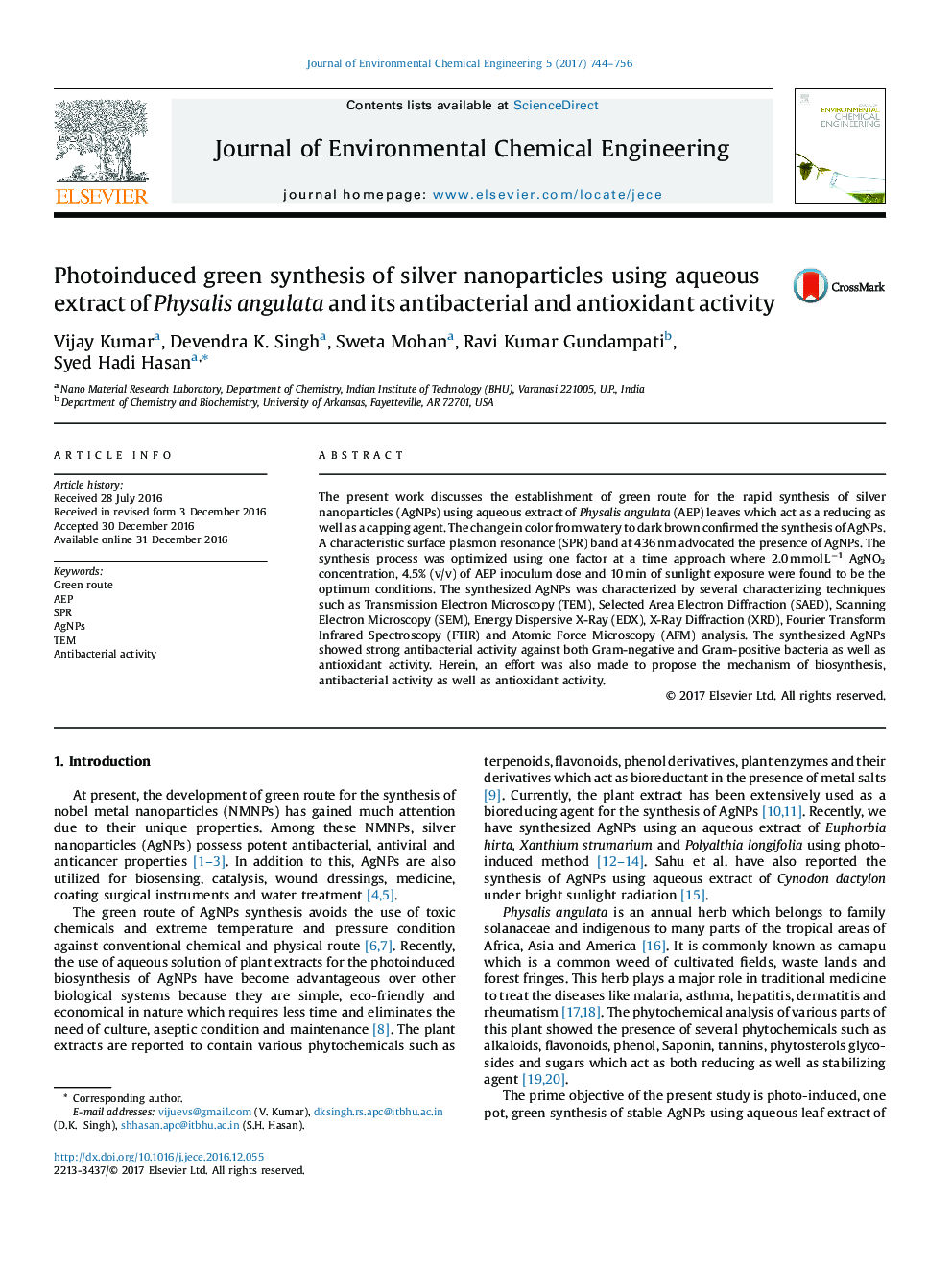| Article ID | Journal | Published Year | Pages | File Type |
|---|---|---|---|---|
| 6477483 | Journal of Environmental Chemical Engineering | 2017 | 13 Pages |
â¢Photoinduced green synthesis of AgNPs within 10 min of sunlight exposure.â¢The synthesis of AgNPs did not require any hazardous reducing agents, heating and stirring.â¢On the basis of results and facts, the AgNPs synthesis mechanism was proposed.â¢The antibacterial and antioxidants activity of synthesized AgNPs was also evaluated.
The present work discusses the establishment of green route for the rapid synthesis of silver nanoparticles (AgNPs) using aqueous extract of Physalis angulata (AEP) leaves which act as a reducing as well as a capping agent. The change in color from watery to dark brown confirmed the synthesis of AgNPs. A characteristic surface plasmon resonance (SPR) band at 436 nm advocated the presence of AgNPs. The synthesis process was optimized using one factor at a time approach where 2.0 mmol Lâ1 AgNO3 concentration, 4.5% (v/v) of AEP inoculum dose and 10 min of sunlight exposure were found to be the optimum conditions. The synthesized AgNPs was characterized by several characterizing techniques such as Transmission Electron Microscopy (TEM), Selected Area Electron Diffraction (SAED), Scanning Electron Microscopy (SEM), Energy Dispersive X-Ray (EDX), X-Ray Diffraction (XRD), Fourier Transform Infrared Spectroscopy (FTIR) and Atomic Force Microscopy (AFM) analysis. The synthesized AgNPs showed strong antibacterial activity against both Gram-negative and Gram-positive bacteria as well as antioxidant activity. Herein, an effort was also made to propose the mechanism of biosynthesis, antibacterial activity as well as antioxidant activity.
